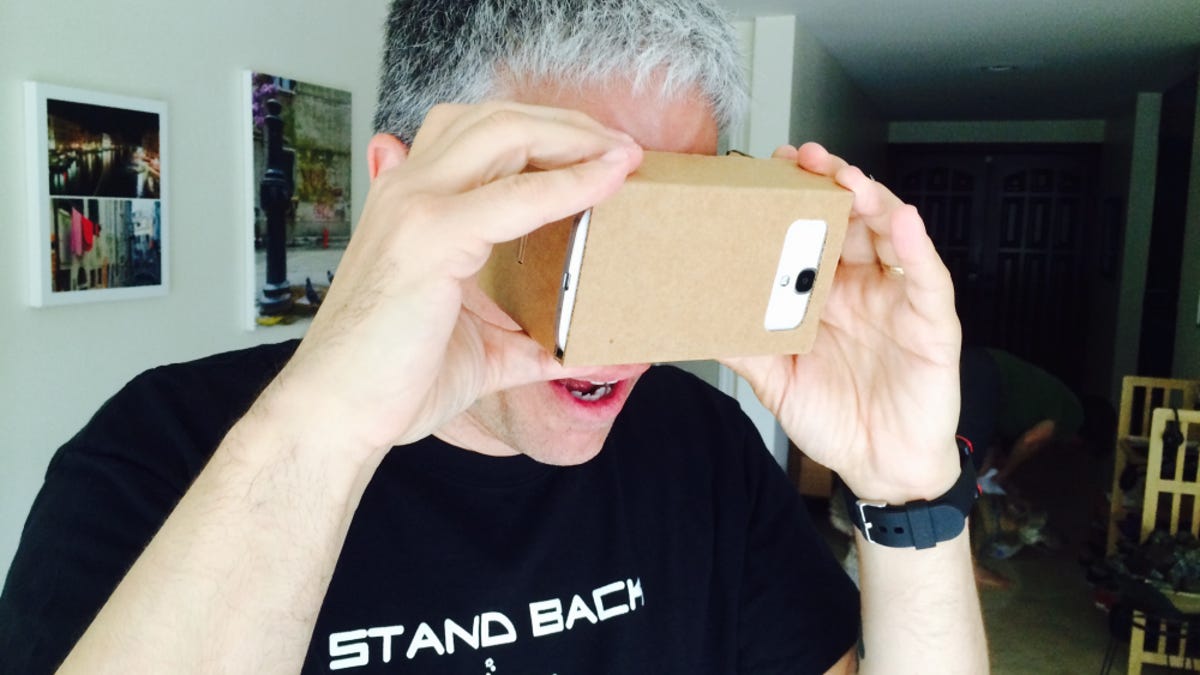Getting started with Google Cardboard
Find out how to build or buy this unlikely VR headset, then make your first forays into the virtual world.

It sounds made up: Your smartphone, a couple of plastic lenses, and some strategically cut cardboard come together to form a virtual reality headset.
Yet that's the, er, reality of Google Cardboard, which made its debut at last year's Google I/O conference and received a 2.0 update at this year's. Along the way, developers have cranked out some very cool Cardboard-compatible apps, while Google went so far as to create a dedicated Apps for Google Cardboard store.
If you've been itching to try this for yourself, you have two options: Build a headset or order a kit. The DIY route requires a visit to Google's Get Cardboard page, where you'll scroll down to the Build It Yourself section and mouse over the various parts shown.
However, although the page itself makes reference to "the new Cardboard," the accompanying build-it-yourself images (and pop-up guides) still show the original Cardboard. Also, the instructions file Google has made available for download contains a manufacturer's kit, not a consumer how-to, and it's for version 1.2, not 2.0.
Until Google updates all this, your best bet may be to simply order a Cardboard kit. Companies including I Am Cardboard and Unofficial Cardboard already have 2.0 kits for sale, with prices in the $20 range (converted, about £13 or AU$26).
In fact, Unofficial Cardboard is also offering a Plus version that includes adjustable lenses (which promise to help combat motion sickness), and its launch-sale price is the same as the regular version: $19.95 (US). Watch for a hands-on review in the next few days.
Once you've equipped yourself with Cardboard, here's what you should know about using it.
Although compatibility was something of an issue with Cardboard 1.0, the new version is larger -- it can support screens up to 6 inches -- and relies on a non-magnetic action button. Translation: It should work with just about any Android phone.
Where to find VR content
Once you've got the hardware, you need content to view. The logical place to start is with Google's eponymous Cardboard app. Although it hasn't been updated much since it debuted last year, it's still a great showcase for what the technology can do. Its six demos are as follows:
Earth: Borrowing from Google Earth, this demo lets you fly around a city or mountainside, looking up to soar up, down to soar down, and in any direction to "steer." Pressing the button stops and starts your movement. And it can also fly you all the way to space, which is where you'll choose another destination (again with a button-press).
Exhibit: Check out a 3D-modeled art "exhibit" of various historic masks. Click the button, ViewMaster-style, to move from one image to the next.
Photo Sphere: Quick! Have you snapped any photos using Android's panorama feature? Here's your chance to get a real 360-degree view of them.
My Videos: If you have any videos loaded on your phone, here's your chance to view them on a seemingly huge screen.
Tour Guide: Take a virtual visit to Paris and explore the Palace of Versailles. There's no movement, though, only immersive panoramas of various rooms and the grounds outside. Very cool -- but not quite a substitute for actually going there.
Windy Day: Already familiar to Moto X owners, this adorable bit of VR storytelling feels like something from the Pixar archives (and in fact was created by a Pixar director). It's worth popping on headphones for this one.
Once you've fiddled with the demo app, head to Google's featured-apps page, where you'll find must-see gems such as Paul McCartney (in concert, with you onstage right next to him) and VRSE, which includes about half a dozen of downloadable real-world VR experiences.
After that, searching the Play store for "Google Cardboard" will lead you to tons of other Cardboard-compatible apps. If you've found any that really blew your mind, hit the comments and tell us about them!

